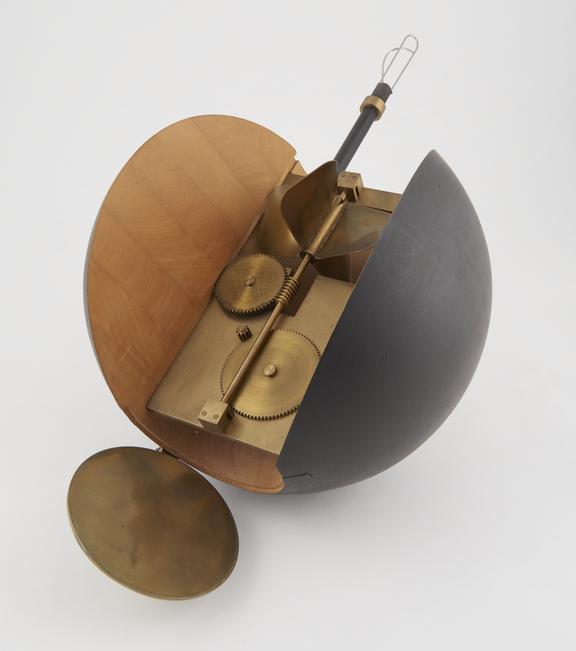

Reconstruction of Robert Hooke's waywiser sounder for measuring the depth of the ocean
- Made:
- 1977 in South Kensington
- designer:
- Robert Hooke

Reconstruction of waywiser sounder for measuring the depth of the ocean, from a design by Robert Hooke about 1690, made by the Science Museum, London, UK, 1977.
The early Royal Society of London (founded 1660) encouraged marine science, and Curator of Experiments Robert Hooke (1635-1703) devised various instruments for studying and observing the ocean. Some of his designs were constructed but were only tested in the calm waters of the river where he demonstrated them to the society.
The sounder worked on the same principle as a waywiser (for measuring distance over land) or ship’s log. A vane was turned by the flow of water as the instrument sank and this vane moved a series of toothed wheels and a pointer which indicated the distance travelled. In theory, the sounder operated on the way down; the spring clip detached the weight on striking bottom and the float brought the assembly to the surface where it could be recovered and the counter read. In practice, the sounder might have been carried some distance from the ship by currents. It was also not easily seen when it reappeared at the surface.
Details
- Category:
- Oceanography
- Object Number:
- 1977-18
- Materials:
- wood (unidentified), brass (copper, zinc alloy), plastic (unidentified), metal (unknown), stone and rope fibre
- Measurements:
-
overall: 560 mm x x , 240 mm, 4.235kg
- type:
- mechanical sounder and reconstruction




